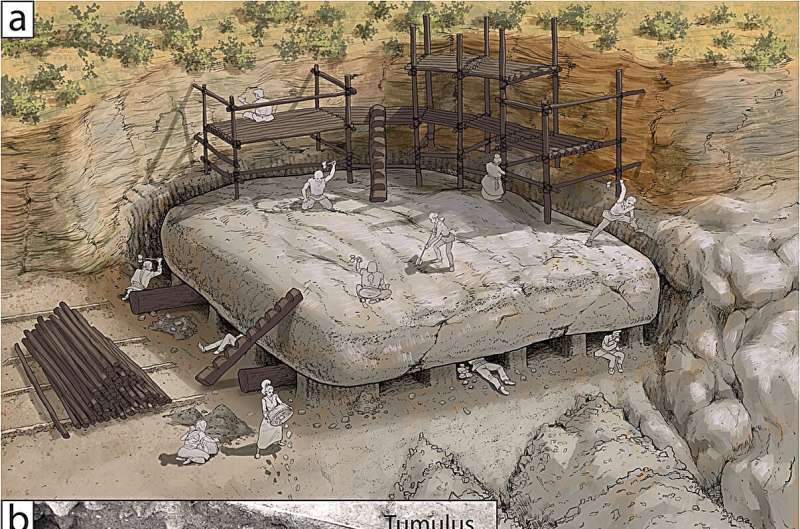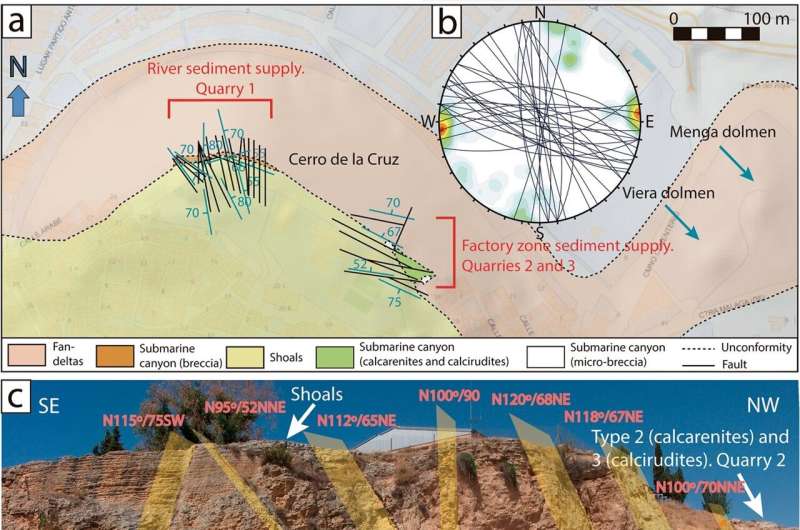December 5, 2023 report
This article has been reviewed according to Science X's editorial process and policies. Editors have highlighted the following attributes while ensuring the content's credibility:
fact-checked
peer-reviewed publication
trusted source
proofread
Closer look at the Menga dolmen shows it was one of the greatest engineering feats of the Neolithic

A team of archaeologists, geologists and historians affiliated with several institutions in Spain has found that the Menga dolmen represents one of the greatest engineering feats of the Neolithic. In their study, published in Scientific Reports, the group used new technology to learn more about the stone that was used to create the ancient burial site and to explore how wood and rope would have been used in its construction.
The Menga dolmen is an ancient burial mound located near Antequera, Málaga, Spain. It has been dated to approximately 5,700 years ago and is one of the largest known megalithic structures to be built in Europe. It was built into the top of a hill using large stones, the largest of which weigh more than 100 tons. In this new effort, the research team took a closer look at the composition of the stones used to build the burial mound, where they came from and how they were transported.
To learn more about the makeup of the stones, the research team used petrographic and stratigraphic analysis techniques, which showed that the stones were mostly calcarenites, a type of detrital sedimentary rock. In the modern age, they are known as soft stones due to their fragility. According to the researchers, such a soft type of rock would have been difficult to transport without causing damage—a finding that suggests a certain level of engineering sophistication.

Moving and placing such large stones, they state, would have involved massive planning and engineering, particularly for the capstone, which, as its name implies, was laid across the top of the chamber to serve as a roof. The researchers say it weighs approximately 150 tons. They point out that placing such large rocks would have involved the use of scaffolds and ropes, and transporting them would have required level roads.
The research team also states that the burial ground was built in such a way as to point in a desired direction. Its position aligns with nearby mountains in a way that creates complex light patterns inside the chamber. They also found that the early engineers had devised a way to place stones at the edges of the burial chamber in interlocking fashion to channel away water seepage as a means of preventing erosion.
More information: José Antonio Lozano Rodríguez et al, The provenance of the stones in the Menga dolmen reveals one of the greatest engineering feats of the Neolithic, Scientific Reports (2023). DOI: 10.1038/s41598-023-47423-y
Journal information: Scientific Reports
© 2023 Science X Network



















